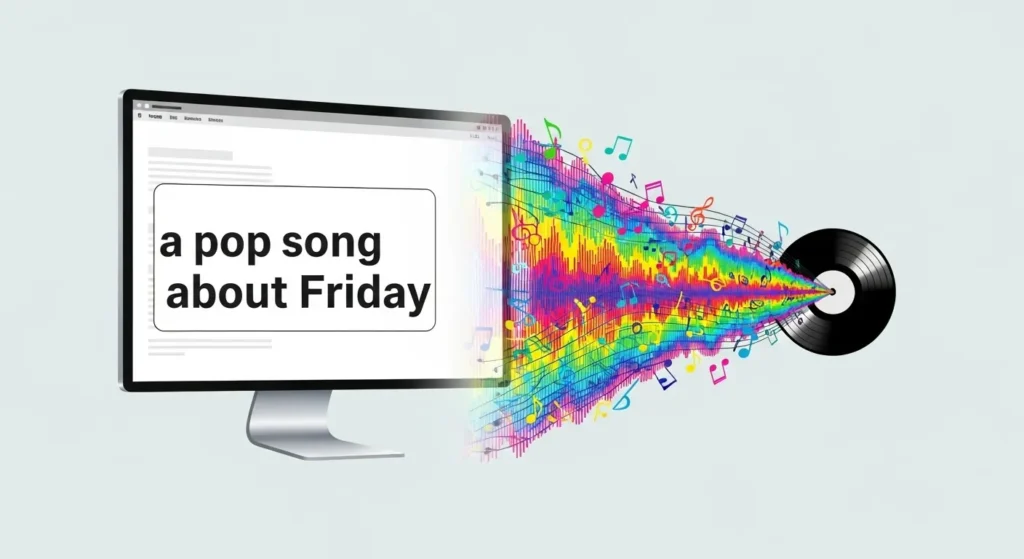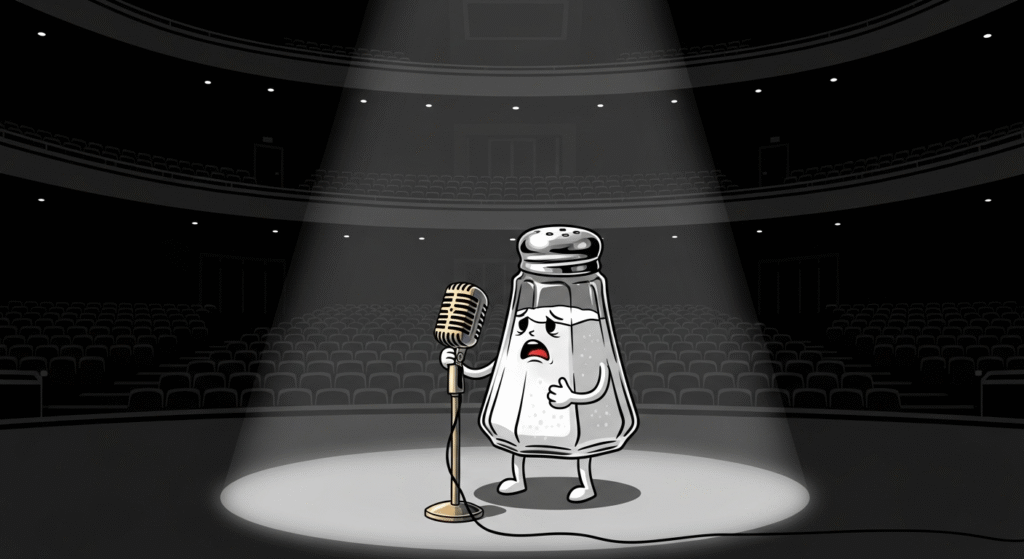You’ve probably seen Ai popping up on your social media feeds: catchy, bizarre, and surprisingly professional-sounding songs about the most random things.
This is the world of AI music, and tools like Suno and Udio are leading the charge, letting anyone create a full song with just a few typed words.
But are these AI-generated tunes actually any good? We decided to dive in and test them out with our own ideas to see if an algorithm can really pass for a real musician.
Is this the future of music, or just a fun new toy? Let’s find out.
Table of Contents
What Are We Even Talking About?
So, what are these AI music tools exactly? The easiest way to think about them is like ChatGPT, but for songs.
Instead of typing a question to get a text answer, you type a description of a song you want to hear.
For example, you could write something as specific or as silly as, “a happy folk song about a dog stealing a sandwich.”
In just a minute or two, the AI creates a complete song based on your idea.
And we’re not talking about just a simple melody; we mean the whole package: vocals singing original lyrics, a full set of instruments, and a proper song structure with verses and a chorus.
Just a few years ago, this kind of technology felt like something straight out of a sci-fi movie.
Today, tools like Suno and Udio have put a music studio in everyone’s web browser, ready to go with just a few clicks.
We Gave an AI Some Crazy Prompts. Here’s What Happened.

Talk is cheap, so we decided to get our hands dirty and see what these AI music generators are really made of.
To do this, we didn’t just ask for one song—we created three completely different challenges to test the AI’s range.
We wanted to see how it handled different vibes, from a radio-friendly bop to something deeply emotional.
Here were our three tests:
1. The Pop Hit
First, we wanted to see if the AI could craft a genuine earworm. Could it make something catchy, fun, and modern?
- Our Prompt: “A catchy, upbeat pop song about finally leaving work on a Friday.”
- The Goal: We were looking for a solid beat, a memorable chorus, and that energetic vibe you’d want in a song to blast in your car with the windows down.
2. The Weird One
Next, we decided to get weird. Art isn’t always straightforward, so we wanted to test the AI’s creativity and see if it could handle a truly bizarre request.
- Our Prompt: “A dramatic, orchestral song from the perspective of a lonely salt shaker on a dinner table.”
- The Goal: Could the AI take a completely absurd concept and run with it? We wanted to see if it could create a unique mood and tell a story, no matter how silly.
3. The Heartfelt Ballad
Finally, we challenged the AI with what might be its toughest task: creating genuine emotion. This is where human artists usually shine, so it was the ultimate test.
- Our Prompt: “A soft, acoustic guitar song about missing an old friend.”
- The Goal: This wasn’t about being catchy or funny. We wanted to know if a machine could capture the feeling of nostalgia and sadness, and create something that actually felt sincere.
ALSO SEE
5 AI Automation Tools to Save Your Business 10+ Hours a WeekDiscover powerful AI tools that can streamline your workflow and boost productivity.
The Results: The Good, The Bad, and The Bizarre

After feeding our prompts to the AI, we sat back, put on our headphones, and listened to what it came up with. The results were a fascinating mix of impressive, underwhelming, and just plain weird.
The Good: An Absolute Earworm
Okay, we have to admit it: the pop song about leaving work on a Friday was an absolute earworm.
The AI delivered a slick, modern beat, a catchy chorus that got stuck in our heads almost immediately, and vocals that sounded genuinely enthusiastic.
It completely understood the assignment and created a track that we actually added to our own playlist.
It was the kind of fun, mindless bop you’d expect to hear on the radio, proving the AI is surprisingly good at making polished, mainstream music.
The Bad: A Robotic Ballad
This is where the AI showed its limits. When we asked for a soft, heartfelt song about missing an old friend, the result felt… a little robotic.
While the acoustic guitar sounded nice enough, the lyrics were full of clichés and generic phrases like “walking down memory lane” and “wish you were here.”
It missed that specific, personal touch that makes a sad song truly resonate. It had the shape of an emotional song, but it lacked the human soul.
The Bizarre: A Salt Shaker’s Opera
But the song that made us laugh out loud was the one about the lonely salt shaker.
This was a masterpiece of pure nonsense! Instead of a simple tune, the AI created a dramatic, over-the-top orchestral piece with a booming, operatic voice singing about being forgotten next to the pepper.
The sweeping violins and serious tone made it absolutely hilarious. It proved that while the AI might struggle with real emotion, it’s an incredible tool for pure, unhinged creativity and fun.
A Tool, Not a Takedown
So, after all our experimenting, what’s the final verdict? Is AI the next rockstar?
In our opinion, probably not. Your favorite artists aren’t going to be replaced by a laptop anytime soon.
The reason is simple: a true “rockstar” is about so much more than just a perfect-sounding song.
It’s about the human connection. It’s about the vulnerability in a songwriter’s voice, the raw energy of a live concert, and the personal stories that make a song feel real.
Our experiment with the heartfelt ballad showed this perfectly—the AI made a song that sounded sad, but it couldn’t make one that felt sad.
Instead of seeing AI as a replacement, it’s much more useful to think of it as a powerful new tool. It’s a creative partner that can help bring ideas to life for all sorts of people:
- For musicians, it’s a great way to break through writer’s block. An AI can generate a quick melody or chord progression to spark a new idea.
- For video creators, it’s a game-changer. Need a unique soundtrack for your YouTube video or Instagram Reel? You can create a custom-length, royalty-free song in minutes.
- And for the rest of us, it’s a dream come true. Ever had a song idea in your head but can’t play an instrument or sing? Now you can finally hear what it sounds like.
At the end of the day, AI music isn’t a threat to human artists. It’s a new creative playground.
It opens the door for more people to play with sound, to experiment with ideas, and to have fun making music—and that’s something to be excited about.
Your Turn to Hit the Studio!
AI music is here, and as we discovered, it’s a wild ride of catchy hits, near-misses, and pure creative fun.
It’s a fantastic new playground that lets anyone, regardless of their musical skill, turn a simple idea into a full-blown song.
Now it’s your turn. Head over to a tool like Suno or Udio, create your own AI-powered masterpiece, and share the link with us in the comments below! We can’t wait to hear what you come up with.
Frequently Asked Questions (FAQs)
What exactly is an AI music generator?
Think of it as a smart computer program where you type in a description of a song you want (like “a funky disco song about a cat who loves to dance”), and the AI creates a brand new, complete song for you with vocals and instruments.
Is it free to use tools like Suno and Udio?
Yes, both Suno and Udio have free versions! They usually give you a certain number of free credits each day to create songs. If you want to make a lot more music or get access to special features, they also offer paid subscription plans.
Can I use the music I create for my own projects?
This is a great question! Generally, if you have a paid subscription, you can use the music you create for personal and even commercial projects (like YouTube videos). For free users, there might be some restrictions, so it’s always a good idea to check the specific terms of use on their website. They make it pretty clear.
Do I need to be a musician to use this?
Not at all! That’s the best part. You don’t need to know how to play an instrument, sing, or read music. If you can describe an idea in a sentence, you can create a song. It’s made for everyone.
Will AI replace human musicians?
It’s highly unlikely. As we found in our tests, AI is great at making something that sounds good, but it often misses the real human emotion and personal stories that make music special. Think of it as a new instrument, like the synthesizer was decades ago—it’s a powerful tool for artists to use, not a replacement for them.
Ai Music
AI music generator,AI music generator,AI music generator,AI music generator,AI music generator, AI music generator,AI music generator,AI music generator,AI music generator,AI music generator,AI music generator.